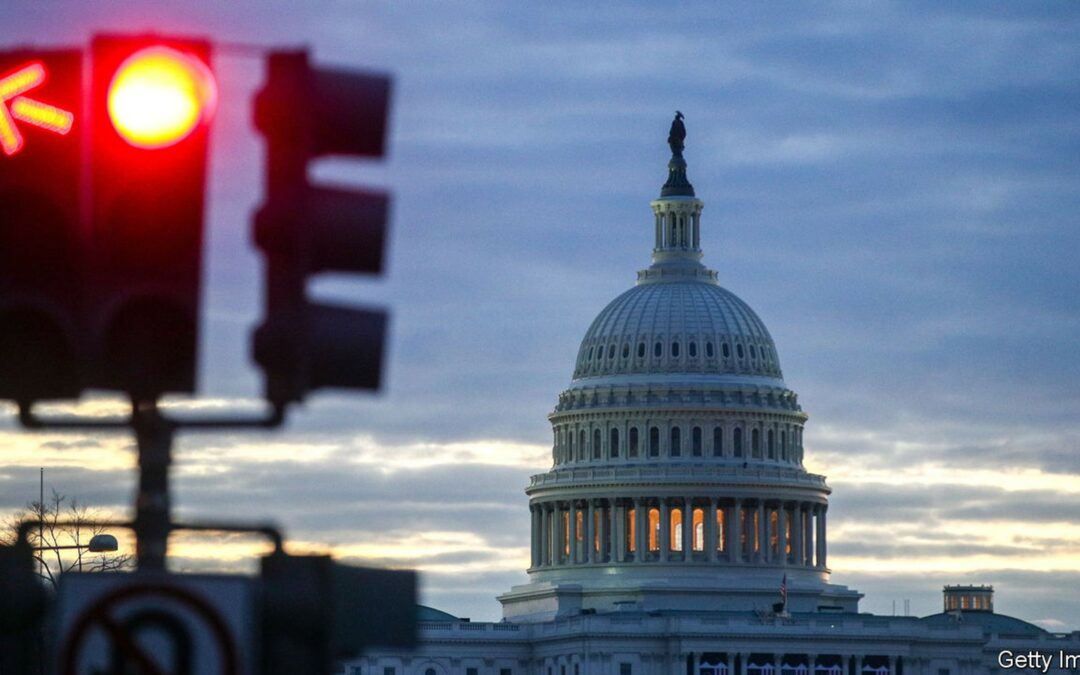ON SEPTEMBER 26TH American lawmakers returned to Washington, DC, with yet another government shutdown looming. The federal fiscal year begins on October 1st, but Congress has yet to appropriate the funding needed to keep the government running. The Senate has approved a bi-partisan bill that would prevent a shutdown until November 17th. But Kevin McCarthy, the Republican speaker of the House of Representatives, does not seem likely to convince hard-right members of his party to vote for stopgap funding. On September 22nd the White House ordered federal agencies to prepare for what would be their fourth shutdown in a decade. What happens when America’s government shuts down?
Parts of it will keep running. Hospitals run by the Veterans’ Affairs Department, which provide care for millions of people, remain open. Post is delivered: the United States Postal Service is funded by revenue from stamps and services rather than appropriated tax dollars. Police, members of the armed forces, air-traffic controllers and Transportation Security Administration employees who screen passengers at airports all keep working. But, like federal workers who get “furloughed” (ie, told not to come into work), they do not get paid. After the last shutdown, which began on December 22nd 2018 and lasted for 35 days, Congress passed a law guaranteeing back pay for furloughed workers, who then amounted to 800,000 of the 2.1m non-postal federal workforce. But extended shutdowns will still strain federal workers’ pocketbooks.
Some parts of the state will strip back their operations. Recipients of Social Security (pensions) and Medicare should still receive cheques, for example, although new applicants may need to wait to enroll, and some payments could be delayed. But other federal functions stop, either immediately or eventually, as agencies exhaust stored funding.
In previous shutdowns, for example, the Environmental Protection Agency halted inspections of chemical facilities and drinking-water providers, as well as of sites that handle hazardous waste. The Food and Drug Administration may stop inspecting slaughterhouses and other food-production sites. States have had to cover federal obligations for welfare programmes. A long shutdown may see food-stamp payments halted, increasing the risk of hunger among poor families. National parks may remain open, but with sharply reduced services. Immigration courts, already strained, may struggle to function; people may be unable to take out home or business loans that require federal approval.
The longer a shutdown lasts the greater the risk of unexpected consequences, such as fatal accidents caused by unrepaired bridges or highways, or—in the long term—illness suffered because of research left unfunded. Opportunities may be missed as well: a potentially successful business may never get off the ground because the Small Business Administration cannot process loans. Some lawmakers are considering bringing a “discharge petition” to the House floor—a move that would allow them to force a vote on stopgap funding without Mr McCarthy’s participation. It would not avert a shutdown by October 1st, but it could end one quickly. If that fails, the shutdown now in prospect could be particularly damaging. In 2018, Congress had already enacted five of the 12 appropriations bills needed to keep the government running. So far this year, it has passed none. ■









